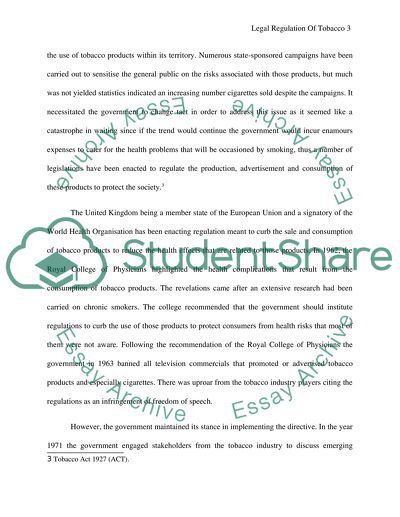Cite this document
(“Explain how the legal regulation of tobacco advertising to consumers Essay”, n.d.)
Retrieved from https://studentshare.org/law/1677313-explain-how-the-legal-regulation-of-tobacco-advertising-to-consumers-has-developed-in-three-contrasting-countries-you-should-use-legal-references-and-include-the-current-situation-in-each-of-the-three-countries
Retrieved from https://studentshare.org/law/1677313-explain-how-the-legal-regulation-of-tobacco-advertising-to-consumers-has-developed-in-three-contrasting-countries-you-should-use-legal-references-and-include-the-current-situation-in-each-of-the-three-countries
(Explain How the Legal Regulation of Tobacco Advertising to Consumers Essay)
https://studentshare.org/law/1677313-explain-how-the-legal-regulation-of-tobacco-advertising-to-consumers-has-developed-in-three-contrasting-countries-you-should-use-legal-references-and-include-the-current-situation-in-each-of-the-three-countries.
https://studentshare.org/law/1677313-explain-how-the-legal-regulation-of-tobacco-advertising-to-consumers-has-developed-in-three-contrasting-countries-you-should-use-legal-references-and-include-the-current-situation-in-each-of-the-three-countries.
“Explain How the Legal Regulation of Tobacco Advertising to Consumers Essay”, n.d. https://studentshare.org/law/1677313-explain-how-the-legal-regulation-of-tobacco-advertising-to-consumers-has-developed-in-three-contrasting-countries-you-should-use-legal-references-and-include-the-current-situation-in-each-of-the-three-countries.


